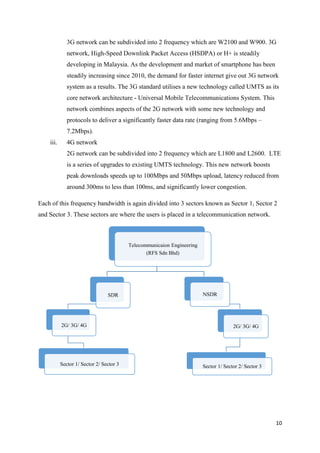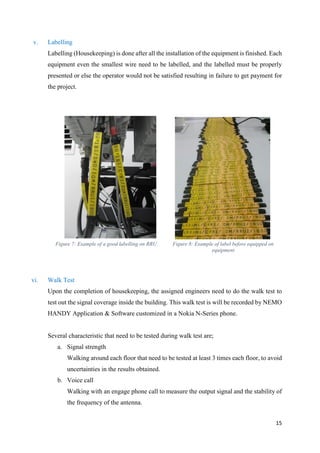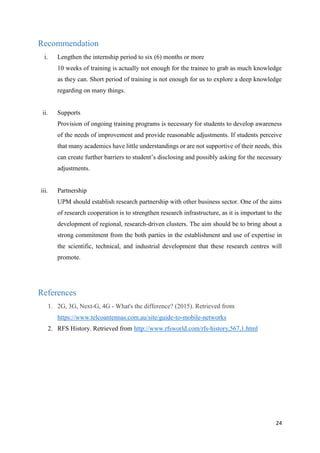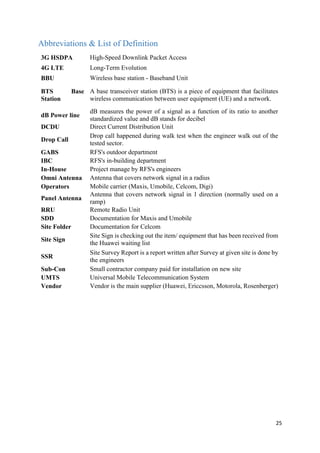This document provides an overview of the author's 10-week internship at Radio Frequency Service (RFS) Sdn Bhd. It includes an introduction to the company's background, objectives of the internship program, and summaries of the author's work experience in different departments. The author gained experience in telecommunication engineering research, in-building construction, and outdoor construction. Challenges faced and lessons learned are also discussed to improve future internship programs.
























